I work for the Alaska Department of Fish and Game as a wildlife biologist in Fairbanks, Alaska. My focus is physiological research on Fish and Game managed wildlife species, and I investigate questions that can be used to inform management biologists. I have been involved in projects that extract steroid hormones from keratin tissues since reading about the extraction of cortisol from grizzly bear hair by Brian Macbeth and coauthors in 2010. This led to work with harbor seal whiskers, ice seal claws, and more recently wolf hair and claws, muskox hair, and moose hooves. While conducting this work I noticed that the method used to grind the material had a substantial effect on the amount of steroid hormone that could be extracted from the keratin powder. I began to wonder how much of the variability among samples was due to differences in animal physiology or if the variability could be, at least in part, attributed to differences in particle sizes due to slight differences during the grinding/pulverization steps. Over the years, while I was extracting steroid hormones from various keratin tissues, Dr. Kathleen Hunt and Dr. Loren Buck were conducting similar work predominantly using whale baleen. Then, Danielle Dillon, working with Alejandro Fernández Ajó, Kathleen Hunt, and Loren Buck, published a paper entitled “Investigation of keratinase digestion to improve steroid hormone extraction from diverse keratinous tissues.” I was very excited about this method. If the keratin is dissolved away, the particle size would no longer be an issue. This seemed to be the answer to my concerns about differences in particle size affecting hormone extraction efficiency.
In the methods section of this paper, it mentions Solid Phase Extraction (SPE) that includes words like “elution” and the use of lab equipment such as an SPE cartridge and an SPE cartridge-specific vacuum manifold. These were all foreign to me, and to be completely honest, a little intimidating. Where I work, almost everyone is focused on wildlife management or ecological questions, and common tools used are GPS collars, VHF receivers, fixed wing airplanes, and ArcMap software. So, I reached out to Danielle and Loren for some advice. We set up a teleconference and I was reminded how rewarding it can be to talk with other researchers with similar interests. During the teleconference, both Danielle and Loren were very informative, genuinely interested in my work, and enthusiastic about working together. By the end of the conversation, it was decided that I should apply for the RCN g2p2pop lab exchange, and if funded, travel to the Buck Lab at Northern Arizona University to learn the SPE methods directly from Danielle.
My proposal was funded, and we chose the first week in February. Beforehand, I prepared some samples. I washed each tissue to remove surface contaminants including oils that can contain hormones. I cut the hair and whiskers into smaller ~1-2mm pieces, and removed samples from the hooves, claws, and horn with a Dremel. I then subsampled a pair of samples from each pool. One was pulverized in a mixer-mill and extracted with methanol (my typical methods). The other subsample was shipped to Flagstaff so that Danielle could get the week-long keratinase process started before I arrived. I chose an array of keratin samples based on my current and past research projects on Alaskan animals. These included:
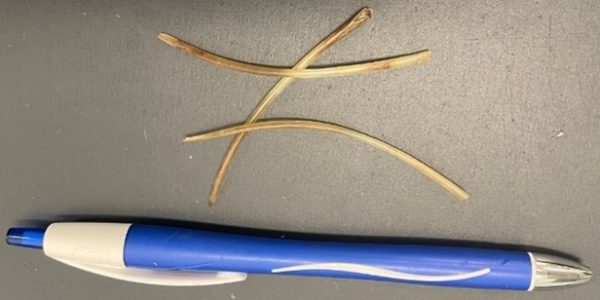
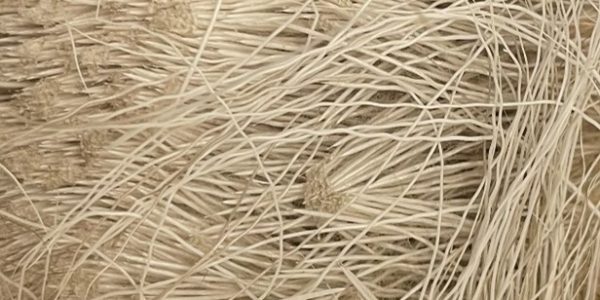
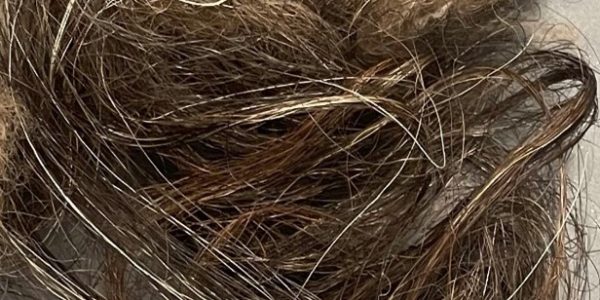
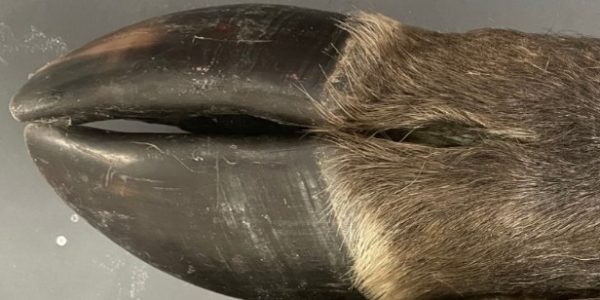
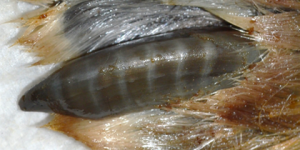

I arrived in Flagstaff Sunday evening, and met Danielle on campus Monday morning, January 31st, 2022. I had not been in Flagstaff since I was a small child and I was delighted, perhaps partly because Jan/Feb it is wonderful to leave Alaska, but I love the Flagstaff area, above freezing temperatures during the days, blue skies, and beautiful mountain scenery.
In the lab, Danielle gave me a brief lab safety orientation and then we took the samples out of the warm water bath where they had been digesting in keratinase the previous week. Surprisingly, the two sample types that I thought might be problematic during this step — the fluffy, air-filled caribou hair and the large chunks of walrus whisker — had digested, but the small muskox hair pieces seemed to be mostly intact. During the week, Danielle walked me through each step culminating on the last day with SPE, so I “eluted” samples and used the SPE cartridge and the SPE-cartridge specific vacuum manifold. Back in my lab in Fairbanks, I will conduct ELISA tests to compare the keratinase digested samples to a subsample of the same material that was not digested, but instead ground/pulverized in the typical fashion. Danielle is a very good instructor; she gave me just the amount of guidance that I needed and allowed me to learn by completing each step myself. Perhaps, more importantly, Danielle is an amazing person, I thoroughly enjoyed my time in the lab with her and we talked about everything, from African ungulate horns to stickleback armor plates. I feel like I could spend a month in the lab and we would not run out of interesting topics to discuss. She is knowledgeable and enthusiastic about so many things. Once I run the ELISA tests on the paired samples, I cannot wait to discuss the results with Danielle and the rest of the Buck lab.
My time in the lab overlapped with the weekly Buck Lab meeting. Danielle asked me to present, and I gave a brief overview of my keratin research projects. This was perhaps the most fruitful outcome of the lab exchange. I met several up-and-coming researchers with similar interests and had the chance to discuss my projects and future ideas with Dr. Loren Buck and Dr. Kathleen Hunt, two respected researchers who are also involved in steroid hormone extraction from keratin tissues. This lab meeting initiated a continued relationship between myself and the Buck Lab that I suspect will lead to additional collaborations and exchange of ideas in the future. I am grateful to the RCN g2p2pop lab exchange program for funding my travel to NAU, and I am grateful to Danielle Dillon and Dr. Loren Buck for freely sharing their time and knowledge with me. The lab techniques I learned will be useful in my position at the Alaska Department of Fish and Game and the relationships initiated during this week working with Danielle at NAU and meeting with the Buck Lab will most certainly continue to enrich my life.